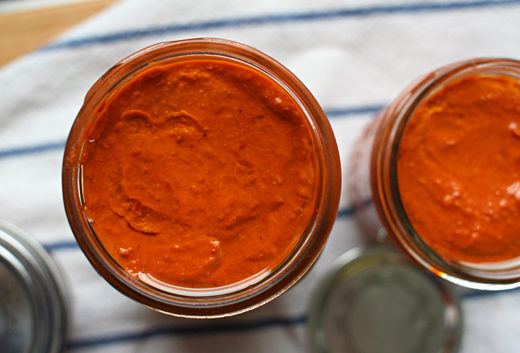
There are recipes for certain things that I will always try—coffee cakes, for instance. If you write a recipe that has coffee and cake in the title it is likely I will make your recipe. Scones and shortbread cookies are also on this list. My list is mostly sweets. But hot sauces claim a spot. Hot sauces are great because they are easy to share, so if you make too much you can give it to a friend. They also keep well so they can improve your everyday eating for weeks or months.
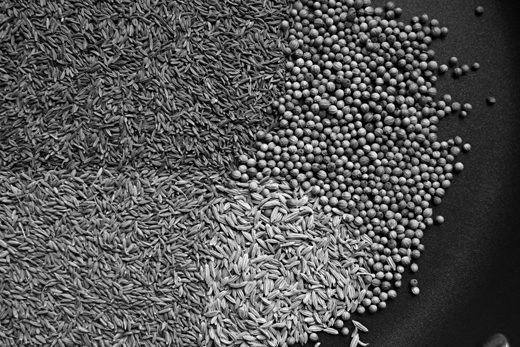
Even within the category of spicy sauces, harissa holds a particular allure. I have 3 or 4 recipes that I really love and all approach the task from fairly disparate directions. I am particularly fond of this recipe from one of the most charming cookbooks of 2014, A Boat, a Whale, and a Walrus. Renee Erickson’s recipe requires some ingredients that you will likely have to seek out, and some time. But you are rewarded with jars of a stellar harissa to share or hoard. Now if the perfect time to make this recipe because it will last much of the summer and spices up any vegetable you might be grilling or egg you might be scrambling. It isn’t much work, mostly measuring and blending, but manages to satisfy.
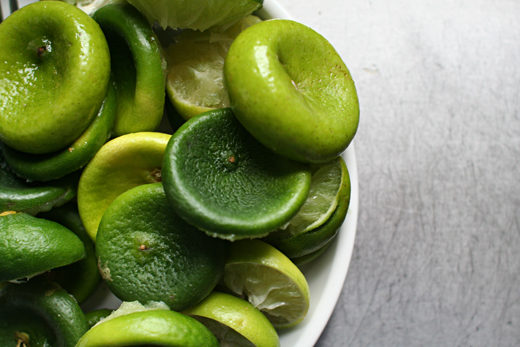
Erickson suggests this be made in a food processor, but mine is not large enough. I make mine in batches using a blender and puree it smoother than the recipe calls for (harissa generally has more texture than what you see if the photos). This makes a big batch, maybe 4 or 5 cups?
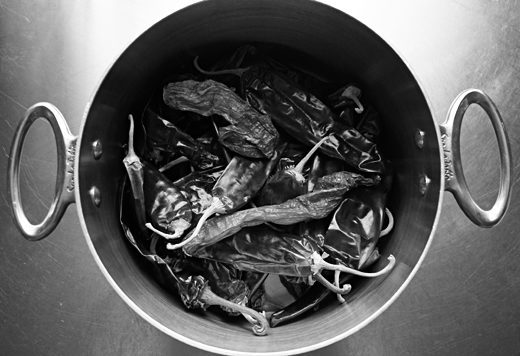
Rose Petal Harissa (from A Boat, A Whale, and A Walrus by Renee Erickson and Jess Thomson)
- 6 ounces dried guajillo chilis
- 3 ounces dried aji amarillo chilis (aji mirasol)
- 1/3 cup whole caraway seeds
- 1/4 cup whole cumin seeds
- 2 tablespoons whole coriander seeds
- 1 tablespoon whole fennel seeds
- 6 large garlic cloves, peeled
- 1 tablespoon dried rose petals
- 1 1/4-1 1/2 cups freshly squeezed lime juice (about 10-12 medium limes)
- 1/2-1 1/2 teaspoons rose water (rose water varies in strength, so taste and adjust)
- 1/2 cup extra-virgin olive oil, plus extra for storing
- 2 – 3 tablespoons kosher salt
Place all of the chilis in a large pot and add boiling water to cover. Over high heat, return the water to a boil, then remove the pot from the heat, weigh the chilis with a smaller pan to ensure they are all submerged, and allow them to sit, covered, for about 24 hours, or until they are soft. (This only took me about 12 hours, this will vary depending on how soft chilies are.)
Next, put the caraway, cumin, coriander, and fennel seeds in a large saute pan over medium heat. Cook the seeds for a few minutes, stirring frequently, until they are toasted and fragrant, and some of them begin popping. Transfer the spices to a plate to cool.
When the spices are cool, transfer them to the work bowl of a food processor (or blender-see note above), and whirl until the spices are ground almost to a powder. Add the garlic and rose petals, and pulse 10 times to form a dry paste.
Working with gloves on if you are sensitive to spice, pull the stems out of the chilis and add the chilis to the food processor, along with any water that comes along for the ride. (Discard stems, but reserve chili soaking water.) Add 1 1/4 cups of the lime juice and the rose water, and whirl until the chilis are very finely chopped., stopping to scrape down the sides of the bowl occasionally. This might take as long as 5 minutes, depending on the machine you are using, you are looking for the texture of small curd cottage cheese. If the mixture is too thick to whirl around the processor, add a little of the reserved chili soaking water until the mixture moves.
When the chilis are finely chopped, add 1/2 cup of the olive oil and 2 tablespoons of the salt, and mix again to blend. Taste for seasoning, adding more of the lime juice and salt, if desire. Store in pint-sized jars, pour a thin layer of olive oil on top to seal, and store in fridge for up to 2 months.
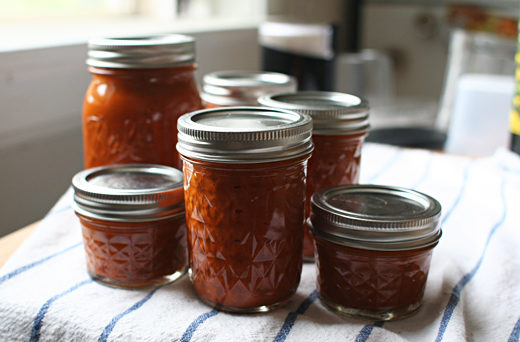



Judi says:
May 17th, 2016 at 8:22 am
There is something about rose petals and rose water, as ingredients, that make me want to run away. Are they really crucial to the recipe or could I sub for something not easily found in a Goop newsletter?
Tim says:
May 17th, 2016 at 8:37 am
Hi Judi- I don’t really understand what GOOP has to do with anything? You can surely do whatever you want. But if you don’t like rose, maybe just find a different harissa recipe? Rose might not be common in western cooking now (though in the 18th and early 19th century it certainly was) but it is definitely common in other parts of the world.
Claire says:
May 17th, 2016 at 10:41 am
Fantastic post! I’m curious as to what your other top harissa recipes are, though.
Roger says:
May 17th, 2016 at 1:05 pm
Harissa is absolutely trending right now and I’m seeing it all over menus so I’m glad you’ve done a post on how to create a unique version of it at home. Rose isn’t my favorite flavor, but I can see how it would provide a unique twist on this sauce, plus it’s totally accurate for the region where this sauce originates. I’m all in!
Dena says:
May 17th, 2016 at 4:09 pm
This looks wonderful Tim. Wow. I can smell it in my kitchen already. Thanks so much. D
Louise says:
May 17th, 2016 at 4:29 pm
I never thought of making harissa, but it looks great.
Louise says:
May 18th, 2016 at 4:16 am
Also, I love the photo of the limes. I’d dehydrate the peel and make it into a powder. It’s tasty on the kale chips I make.
J says:
May 22nd, 2016 at 9:21 pm
What’s wrong with all you guys, rose water is one of my favorite flavas!
Mixed in hot sauce? Intrigued.
I like rose water syrup poured over baklava at the end. Ohhh my it’s good.
Sophie says:
June 24th, 2016 at 1:57 pm
I’m catching up on a few months of favorite blog backup, and man! this recipe sounds like straight magic out of “Like Water for Chocolate”. I can’t wait to try it.
Sophie says:
June 24th, 2016 at 1:58 pm
Also, go home Judi.